Sweden, the Edible Country

Travel with the Mag to Sweden to discover a nationwide food campaign that invites us to spend quality time outdoors and explore the abundance of healthy ingredients that nature generously provides for us.
96% of Sweden is uninhabited and the majority of the landmass is covered by forests. The Nordic country also counts 100 000 lakes and 220 000 islands, and its landscape stretches from sandy beaches in the temperate south, to mountains and arctic temperatures in the north. It comes as no surprise, then, that nature is a central part of the Swedish way of life. From teaching young children respect for plants, animals and the circle of life in forest schools – come rain or shine – to businesses encouraging their employees to spend time outside during their working hours, the outdoors are deeply rooted in the Swedish culture.
This passion for nature is summed up in the Nordic concept of friluftsliv, translating literally to ‘free-air-life’ or ‘open-air living’. The term was coined in the 1850s by the Norwegian poet Henrik Ibsen to describe the value of spending time outside for physical and spiritual wellbeing. While friluftsliv, in its simplest definition, means getting outside for exercise, it is much more a lifestyle based on the freedom, peace and connectedness that spending time in nature offers.
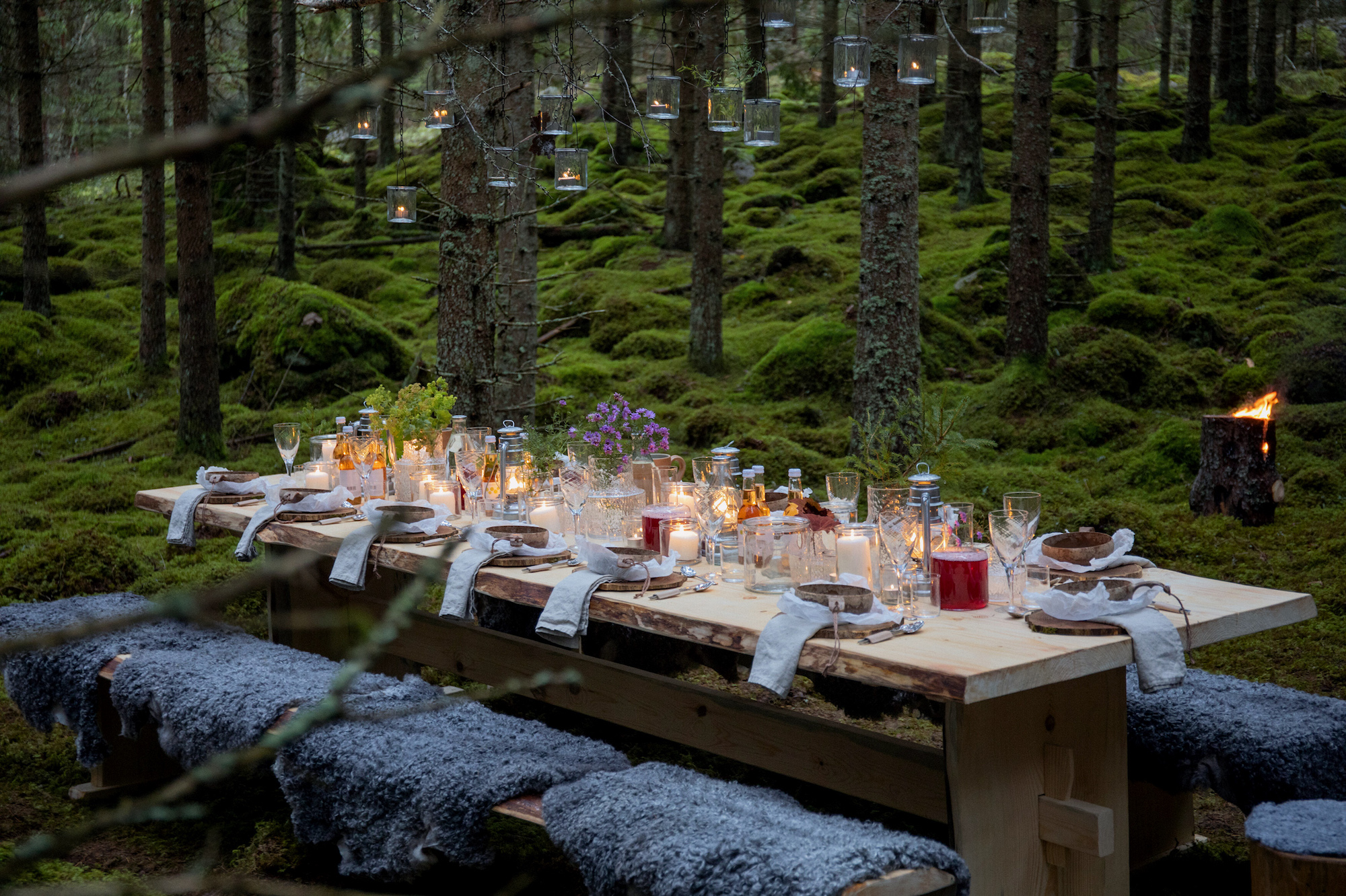
The Freedom to Roam
In fact, access to nature is so deeply engrained in the national identity that it is written into the public constitution. In 1994, the Swedish Parliament passed a law called allemansrätten - the right of public access, commonly known as “every man’s right”. It gives all people the right to roam freely in nature, as well as hike, bike, ski, camp and forage almost anywhere, free of charge. The only thing you have to pay is respect for nature and the animals living there and follow the edict of “do not disturb or destroy”. Aside from private gardens and within 70 meters from private residences, all land is for public use, and fishing is allowed in Sweden’s five largest lakes.
The World's largest Gourmet Restaurant
To pay tribute to Sweden’s natural diversity and all it has to offer, the Swedish government launched a sustainability initiative called ‘The Edible Country’, promoting the whole country as a 100-million-acre do-it-yourself gourmet restaurant. Four Michelin-starred chefs created a foraged-based menu with dishes that each represent a season and a part of the country with ingredients that can be found cross the Swedish countryside.
Along with the menus, which can be found online, come instructions on where to find the ingredients and how to properly cook them. Diners have the choice of either preparing the meals at home (or outdoors), or book one of 23 handmade wooden tables that have been placed in various natural locations across Sweden, free of charge. A cooking kit that includes a small gas stove, plates, cutlery and other necessities can be purchased additionally, and there is also the possibility to have a chef or foraging guide come along to support the culinary journey.
Inspired by the seasons, the menus are based on botanical ingredients found in nature. But - what can be found along the shores of South Sweden is not necessarily found in the dense forests of the north. The menus are therefore adapted to the different landscapes and what they offer. Some recipes require you to bring your ingredients, such as sour cream or honey to complete the dish, but diners are encouraged to choose locally produced or sourced products where they are needed.
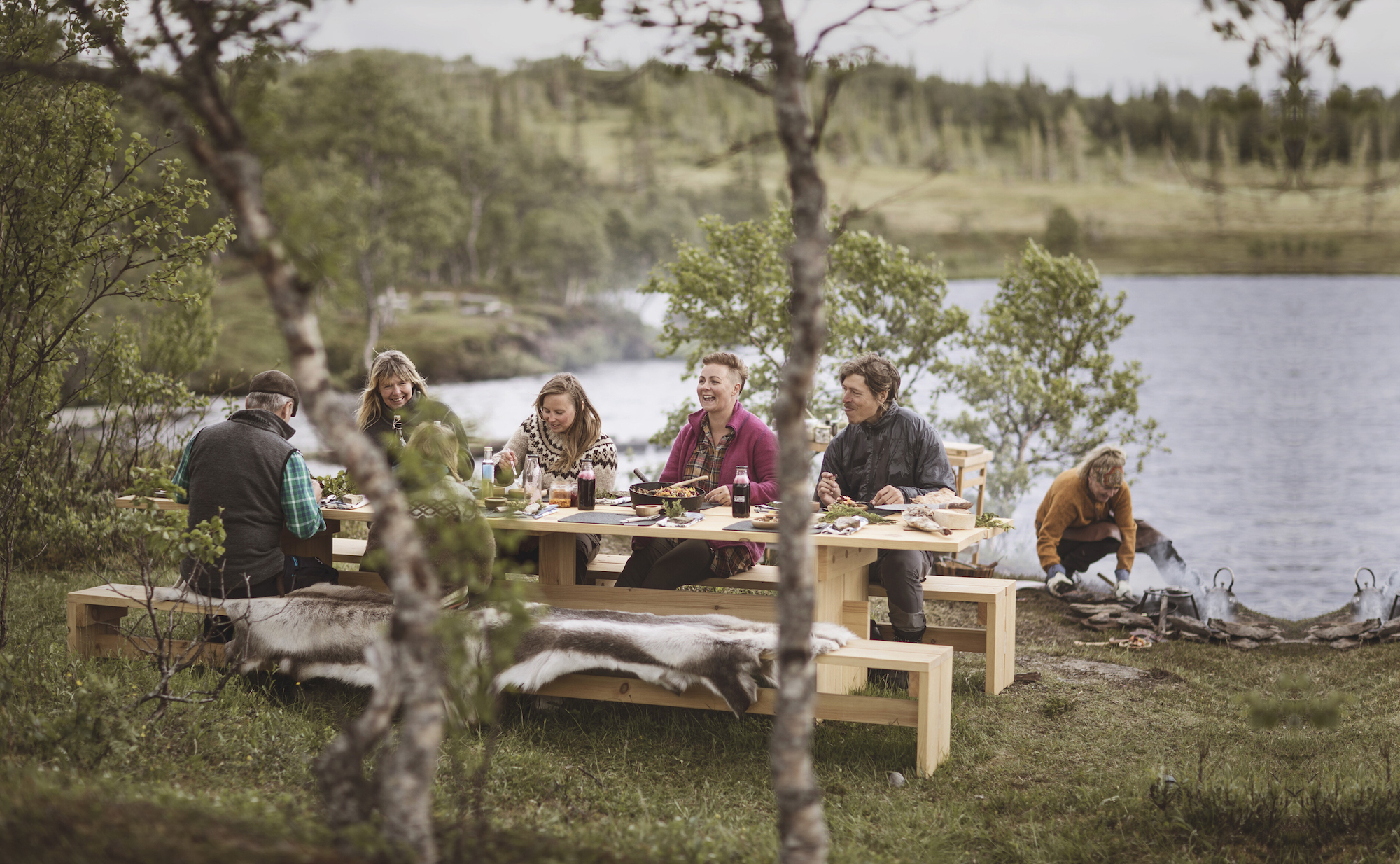
A sample fall meal in central Sweden might include: ground elder, sweet cicely chickweed and field pennycress, which, together with forest mushrooms and lingonberries, combine to broiled herb butter for freshly caught perch. In southern Sweden, the same seasonal menu includes acorns, hazelnuts and berries, combining to a warm berry compote with nut crumbs.
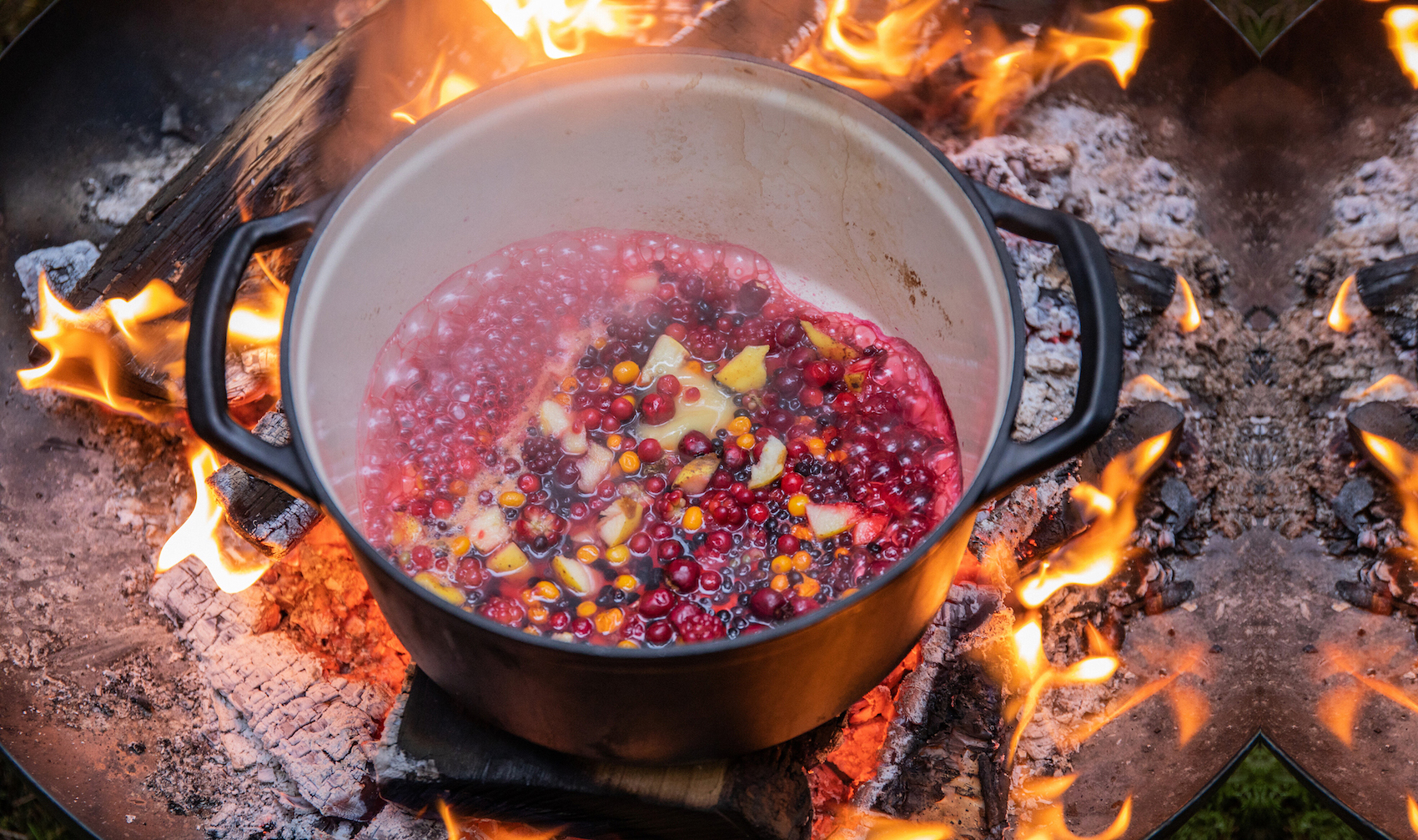
Cheers to the Success
The initiative has generated awareness, both nationally and internationally with the tables being booked almost non-stop during peak season May to September and it has also been successful in international communication awards. Most importantly, however, the campaign has stimulated the debate around locally sourced food, and set an example for how accessible natural ingredients are.
Following the success of The Edible Country’s first year in 2019, a second campaign was launched in a similar spirit: The Drinkable Country, like its name indicates, turned all of Sweden into a do-it-yourself open-air bar as an invitation to be inspired by the vast range of flavors growing wild in the Swedish countryside to concoct drinks. For this initiative too, local beverage experts put together drink recipes that are based on seasonal and edible wild ingredients. For a winter drink, the menu foresees a whiskey-based concoction of rose hip and spruce shoot syrup, foraged in Southern Sweden, mixed with milk and double cream; or punch paired with buckthorn berries, carrot juice and cream.
Born to eat Wild
For most of our history, human survival has been dependent on the wild. Foraging, hunting and gathering are ancient practices that go back to our ancestors. But with the rise of globalisation and agriculture, global food systems have shifted towards industrialised and homogeneous diets, which has changed our lifestyle profoundly and made us spurn the natural variety that exists in nature.
Scientists estimate that out of the 200,000 edible plant species that exist on earth, humans consume just under 200 of them. Maize, rice and wheat account for more than half of the calories and proteins that we derive from plants. At the same time, food production is responsible for one-quarter of the world’s greenhouse gases, while one-third of food produced is wasted globally.
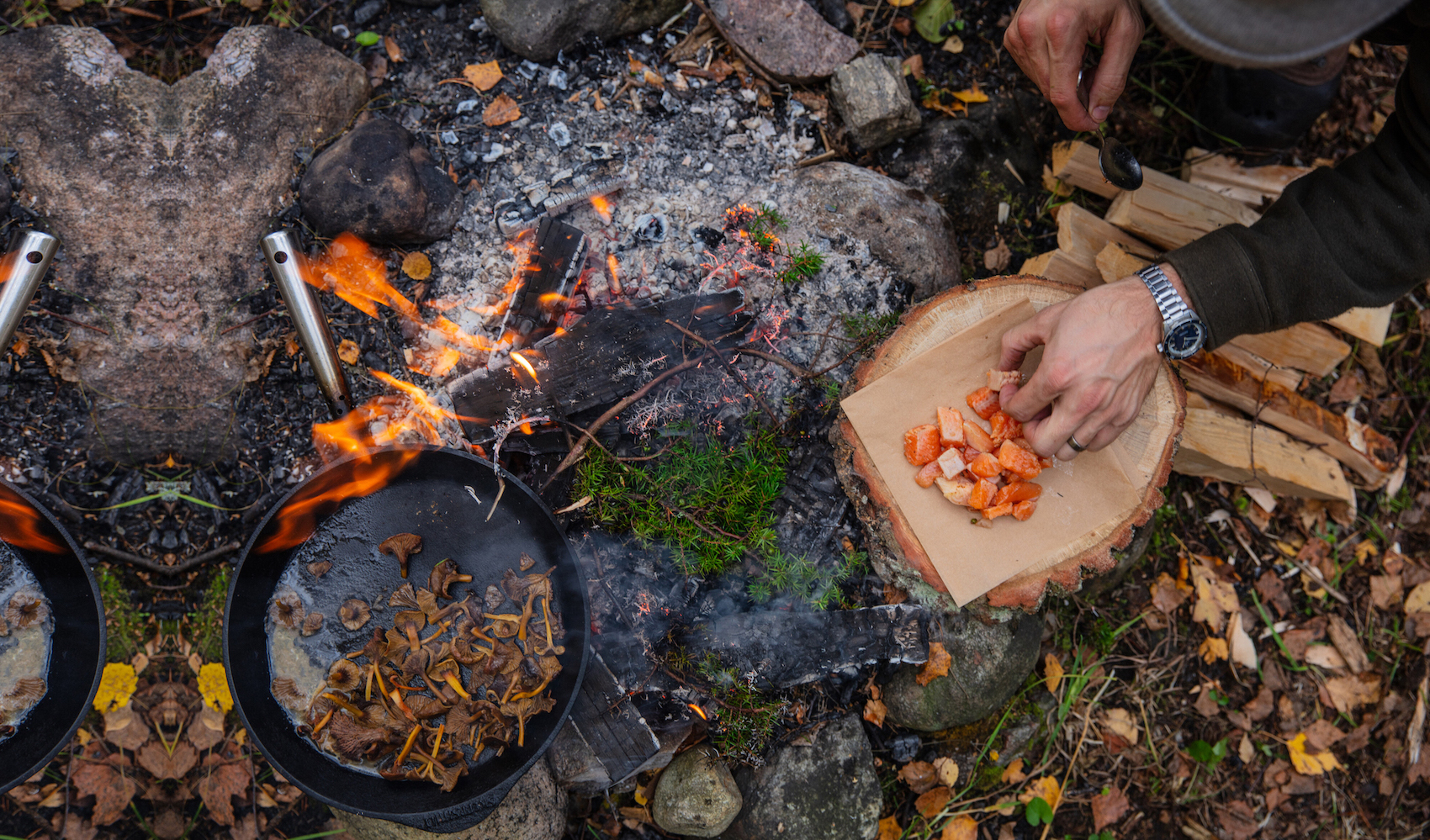
Sustainability as the Main Ingredient
We become what we eat, and so does the earth. With the world waking up to this insight, the food industry is slowly shifting towards more sustainable practices. Local and seasonal ingredients are widely known to reduce carbon emissions as well as support local economies, and are being promoted through strategies like ‘farm to fork’. However, turning to the wild to stock up the kitchen pantry is a trend that is on the rise too.
Foraging has had a surge of interest over the last decade, with Scandinavia taking the lead both through practices rooted in tradition, but also through the emergence of culinary trends. For instance, the New Nordic Food manifesto, born in the early 2000s, advocates a strong ethical approach to the culinary lifecycle by favoring the use of local organic ingredients and championing a return to traditional foods and methods to create innovative - and sustainable - dishes. As a result, many of Scandinavia’s top chefs have pushed the boundaries of their culinary creativity though turning their menus “hyper local” and “micro seasonal”, inspiring both other chefs and foodies around the world to see their local woodlands, fields and bodies of water through a new, abundant lens.
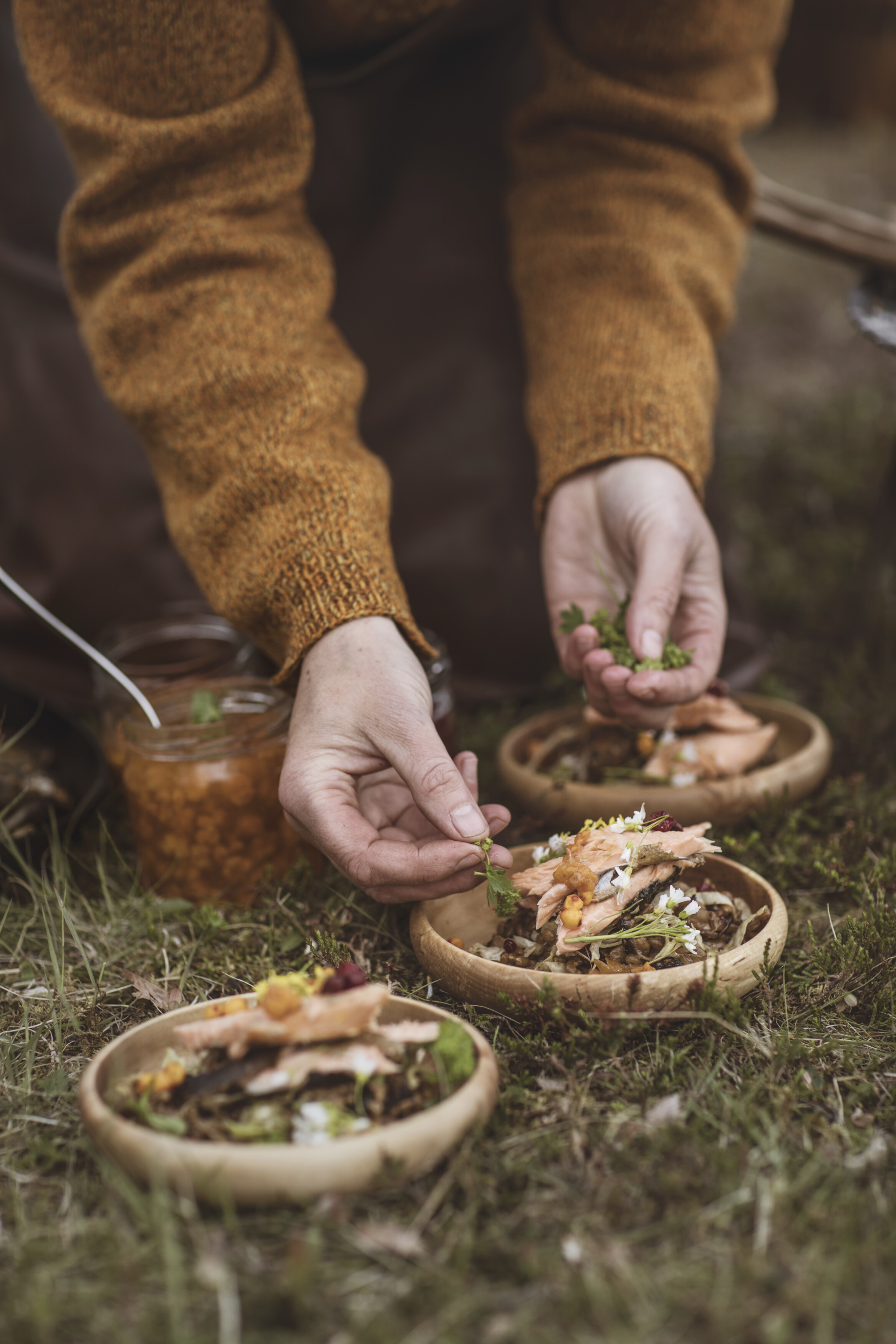
Nurtured by Nature
Looking more broadly, there is an emerging awareness of the need to spend more time outdoors and reap the many benefits of nature. Research shows that there is a strong link between nature and quality of life. Biologist E.O. Wilson even suggested that humans have a deeply engrained love and fascination for nature, which stems from an inherent need to connect with other forms of life, something he referred to as biophilia. The sounds of the forest, the scent of the grass, the breath of fresh air - these things give us comfort. They ease fear and anxiety, reduce anger, boost our creativity, and help us relax and find clarity.
Combined with mindful activities, such as foraging, spending time outdoors has become a way for people to consciously reconnect both with themselves, but also with the Earth. While some believe foraging may just be the newest culinary trend, others believe it to be a dormant instinct that is waking up within people, and perhaps the answer to a need to find a deeper sense of purpose. Whether a passing trend or a practice that is here to stay, the Edible Country initiative is an incentive to spend more time outside and discover the abundance of resources that the wild pantry provides.
It brings us closer to what once was natural to us, and inspires a sustainable and conscious way of looking at food.
To be read also about Sweden



